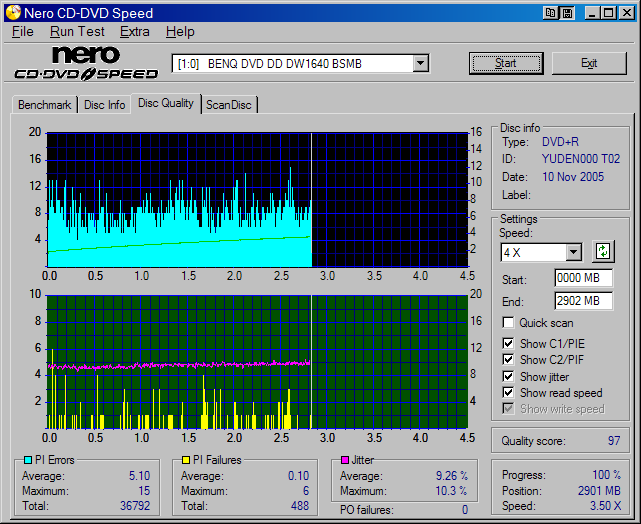Introduction:
Since the late 1980s, myriad liquid-based optical-disc treatments have been introduced, especially in the "high-end" audio market. The developers of these treatments -- as well as magazine editors who "review" them -- claim that they can improve the audio/video fidelity of the media (disc) to which they are applied. Many of these claims seem bold, even far-fetched.
I chose to test three treatments -- Vivid, CD/DVD Playright and Mikro-Smooth -- and determine if there is an inkling of truth to these claims?
Treatments Used:
Vivid -- possibly the best-rated CD treatment currently available for use in improving audio fidelity.
CD/DVD Playright -- not a sound-improvement tweak; rather, this product (and specifically the QuickShield treatment) was strictly engineered to repair and/or improve the durability of optical discs.
Mikro-Smooth -- a polishing treatment that works like fine-coarse "wet-sanding". This treatment requires higher maintenance than either Vivid or CD Playright, mostly because one has to wash and dry the disc after application.
Lab Tests:
The following two images are test scans of exactly the same disc. The only difference: the scan in image two was made after Vivid was applied on the reading-side optical surface.
Before Vivid:
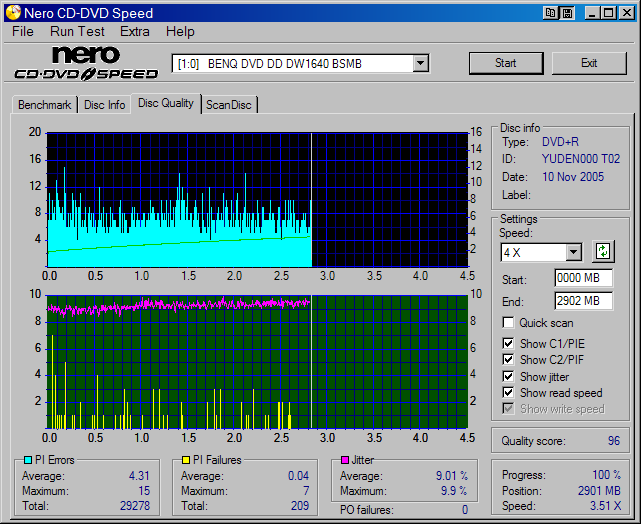
As can be seen, the application of Vivid caused an increase in PI errors/failures and a slight increase in jitter. These results are statistically insignificant. There may be other parameters -- outside the scope of Nero's test utility -- that may be affected, causing subtle changes in perceived audio or video quality.
Let's move on to scanning a CD/DVD Playright-treated disc...
Before treatment with CD/DVD Playright QuickShield (Formula ND):
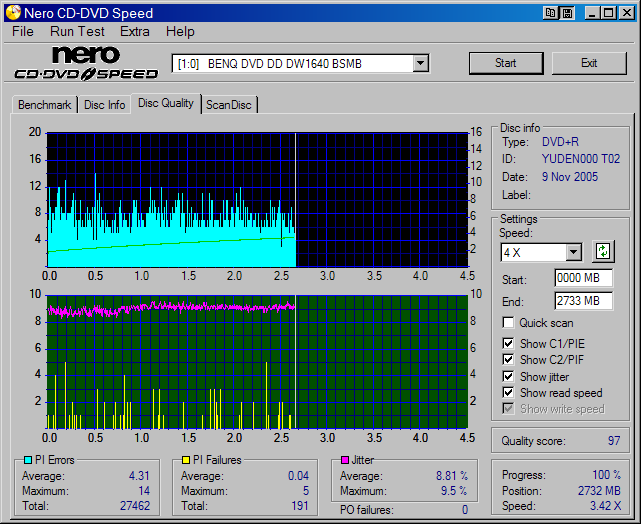
After treatment with CD/DVD Playright QuickShield (Formula ND):
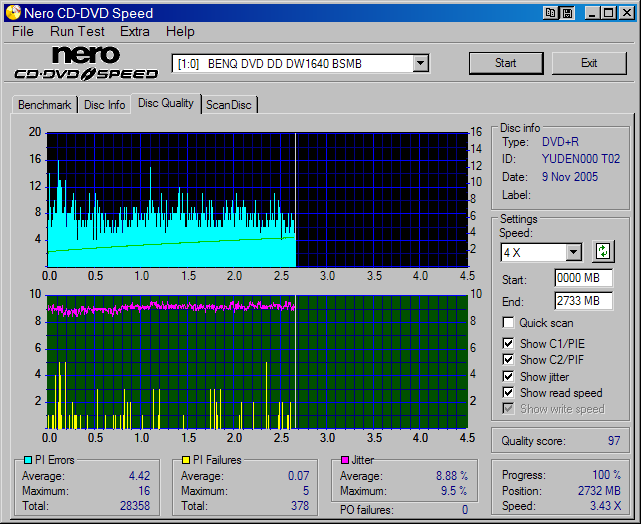
The difference between the two scans is statistically insignificant.
Mikro-Smooth applied to a commercially-pressed CD (soundtrack to Deep Impact, James Horner)
Before Mikro-Smooth:
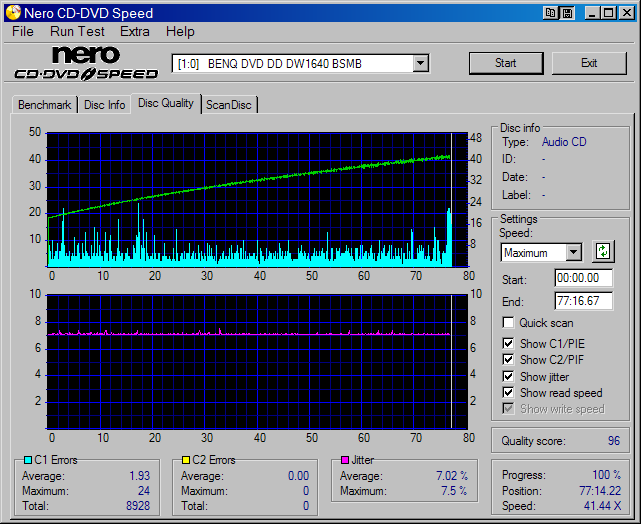
After Mikro-Smooth:

As with CD Playright and Vivid, the differences between the two scans are statistically insignificant.
What I Heard and Saw:
Vivid can make a subtle audible difference in the quality of CD, DVD-A and SACD playback. Other treatments, such as Mikro-Smooth also improve audio fidelity, but to a lesser extent.
I can hear improvement in audio fidelity when optical treatments are applied to CDs. Years ago I also applied them to LaserDiscs, which were slightly improved in both image and sound quality. I haven't done extensive subjective (viewing-session) testing with DVD-V's to report anything conclusive.
Incidentally, I was looking for a definite correlation between tested jitter and sound quality. But due the statistical insignificance of the tests above, none could be established.
Conclusion:
For archiving and heavy-/abusive-use applications, CD/DVD Playright is a relatively inexpensive, effective, durability-improving product. It's particularly useful for discs that will be used in PCs, certain car players and personal Discmans -- essentially, any use that requires repeated and/or extensive handling of the media.
Many audiophile treatments are overly expensive. Whether or not they are worth the money or fuss of applying this stuff for every "important" disc you own is a personal choice. I think most audiophiles will agree that tweaking is part of an enjoyable hobby.
Application Standards?
I've been applying many of these treatments for years, so I think I have a pretty good "feel" for how to carefully do so. If one is not careful, one can damage the disc during the application process. Scratches are an example. If one is test-scanning, accidentally-inflicted damage can taint your results. Please read the Owner's Manuals for each of these products carefully before use.
Blank Media Used:
Taiyo Yuden DVD+R.
Program Material for the DVD+R:
Choir Festival of the Korean United Methodist Church, Los Angeles, California. Recorded by me, November 5, 2005, at Wilshire Ebell Theatre. A Panasonic GS-200 miniDV camcorder was used exclusively. Audio was captured at 16-bit/44.1kHz.
Next article: Optical-Media Repair for CD and DVD: Worth the Fuss and Price?
